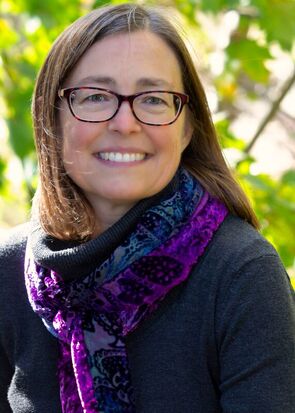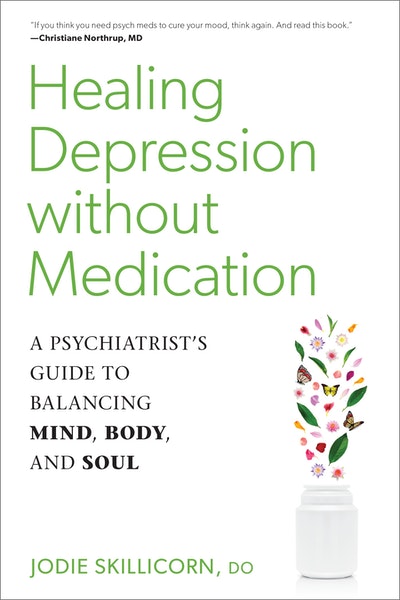

Today we’d like to introduce you to Jodie Skillicorn.
Hi Jodie, we’re thrilled to have a chance to learn your story today. So, before we get into specifics, maybe you can briefly walk us through how you got to where you are today?
I started my career as a photojournalist. I was fascinated by people’s stories — especially their strength and resilience in the face of challenges.
At the time, I didn’t realize that same curiosity about human resilience would eventually lead me into medicine. When I read Christiane Northrup’s Women’s Bodies, Women’s Wisdom, something sparked in me. Her holistic, mind-body approach to women’s health resonated deeply — that the body and psyche aren’t separate, and true healing means tending to both.
When I got to medical school, though, I quickly realized how difficult it is to get to the root of anything in a ten-minute visit when the system is built around managing symptoms and prescribing quick fixes.
That’s what drew me to psychiatry. It was one of the few fields where you could actually slow down and hear someone’s story. I was lucky to be in residency at a time when I could still spend a full hour with people. I witnessed how profoundly our narratives, the stories we tell about ourselves and our experiences, shape our mental, emotional, and physical wellbeing.
I also realized that there was a disconnect between what we were being taught about the effectiveness of medications to transform lives and what I was actually seeing in practice. During residency, I “inherited” most of my patients from a long line of previous residents, and I began to wonder: if medication and talk therapy work so well, why were so many people still stuck with the same symptoms and struggles year after year?
These questions percolated in the back of my mind until I read Robert Whitaker’s, Anatomy of an Epidemic. That book upended everything I had learned in medical school and residency about mental illness. Suddenly, there was solid evidence to back what my intuition had been sensing all along — that something deeper was needed for true healing.
That realization became a turning point, a return to my own inner authority and alignment. From that moment, my path became a quest to not just treat symptoms, but to uncover root causes, heal, and transform from within.
For the past fifteen years I have worked as a psychiatrist, but my work is now evolving into a separate coaching practice where I can help people reconnect to their own inner wisdom, regulate their nervous systems, and reframe the stories that shape their lives. These aren’t skills just for people with a diagnosis; they are the foundations of being a thriving human.
Through coaching, I get to share these tools with more people — to help them build resilience, find inner calm, and reconnect with their own brilliance. In many ways, it feels like a return to my original fascination — the story of human resilience — but now I get to help people rewrite that story from the inside out.
Can you talk to us a bit about the challenges and lessons you’ve learned along the way. Looking back would you say it’s been easy or smooth in retrospect?
One of the biggest challenges early on was deciding to step outside the traditional medical system. I was told by fellow psychiatrists that it wasn’t possible to have a successful private practice outside of a larger institution, that I’d lose security, stability, and support. And yes, it’s true, no one pays my malpractice or health insurance anymore. But I reached a point where I realized I couldn’t keep working in a system that didn’t allow me to truly help people heal, and staying would have put my own wellbeing at risk.
Another challenge came in 2020, when my kids were suddenly home and I had to figure out how to keep my practice going. Like so many others, I transitioned to virtual work, and surprisingly, it’s become one of the best shifts I’ve made. It’s given me more flexibility as both a mom and a physician, and most of my patients actually prefer the convenience.
For those who are local, I offer ‘walk and talk’ sessions in a nearby park. It’s a powerful reminder that healing is amplified by movement, connection, and nature in a way that talk alone can’t reach. In the future, I would love to expand that even more by blending coaching, mindfulness and embodiment practices with time outdoors.
So, while there have been challenges, each one has pushed me to innovate, to trust my own path, and to create a practice that feels aligned with how I’m meant to serve.
Thanks for sharing that. So, maybe next you can tell us a bit more about your work?
At the core of my work, both as a psychiatrist and a coach, is a holistic understanding of healing — helping people reconnect with their innate wisdom, restore balance, and cultivate open-hearted resilience.
As a psychiatrist, I offer a more comprehensive, integrative approach to mental health, taking the time to explore each person’s emotional, physical, energetic, environmental, and spiritual needs. My work weaves mindfulness and somatic-based psychotherapy with evidence-based complementary practices like meditation, breathwork, energy psychology (EFT), EMDR, qi gong, movement, nutrition, time in nature, and supplements.
While I do prescribe medication when it’s truly necessary, more often my role is to help people understand the root causes of their symptoms, and, when appropriate, to taper off medication slowly and safely. The focus is always on restoring balance and resilience, not just managing symptoms.
As a wellness and resilience coach, I draw from many of the same tools, but the emphasis shifts to helping people regulate their nervous systems and reshape the mindset patterns that keep them in cycles of stress or burnout.
Although I offer a few individual coaching spaces, my primary focus is on group programs, where the healing power of connection and co-regulation naturally amplifies transformation.
Ultimately, in both psychiatry and coaching, my work supports people in shifting from stressed and burned out to truly thriving — helping them reclaim their inner wisdom and brilliance while feeling more grounded, calm, and open-hearted.
Looking ahead, I’m also excited to expand this work into organizations — helping leaders and teams understand how chronic stress and dysregulation impact performance, connection, and wellbeing, and how simple nervous system-based practices can foster greater resilience, creativity, and balance in the workplace.
We love surprises, fun facts and unexpected stories. Is there something you can share that might surprise us?
People are often surprised to hear that for someone who teaches about inner peace and resilience, my own journey included plenty of stress and anxiety along the way. Between years of sleepless nights during medical training and two kids who were not big fans of sleeping through the night either, I learned firsthand that resilience isn’t just a concept — it’s a survival skill.
Like so many high-achieving professionals, I know what it feels like to be pulled in a hundred directions, trying to hold it all together while my nervous system screams for rest. Those experiences give me deep empathy for the people I work with and continually remind of the power of reframing and self-regulation.
Add in a rescue dog, two rescue cats, a COVID bunny, and a turtle, and it’s safe to say there’s rarely a dull moment in our house. But that beautiful chaos keeps me constantly practicing what I teach — sometimes failing, sometimes succeeding, but always finding my way back through awareness, reframing, and regulation.
What I’ve learned is that the path to peace is never perfect or linear — and that’s okay. Healing and resilience happen through awareness and self-compassion, not in the ideal moments but in the chaos and discomfort of life as it is, rather than how we think it should be.
Those lived experiences, along with the stories of my patients, are what inspired me to write my book, Healing Depression Without Medication: A Psychiatrist’s Guide to Balancing Mind, Body, and Soul. It brings together the same tools and practices that help me move through anxiety and overwhelm and return to calm, clarity, and balance — the same practices I now share to help others move from stress and burnout to thriving.
Contact Info:
- Website: https://www.jodieskillicorn.com/
- Instagram: @jodieskillicorn
- Facebook: https://www.facebook.com/drjodieskillicorn and https://www.facebook.com/drjskillicorn/
- LinkedIn: https://www.linkedin.com/in/jodie-skillicorn-9a245a1a/












